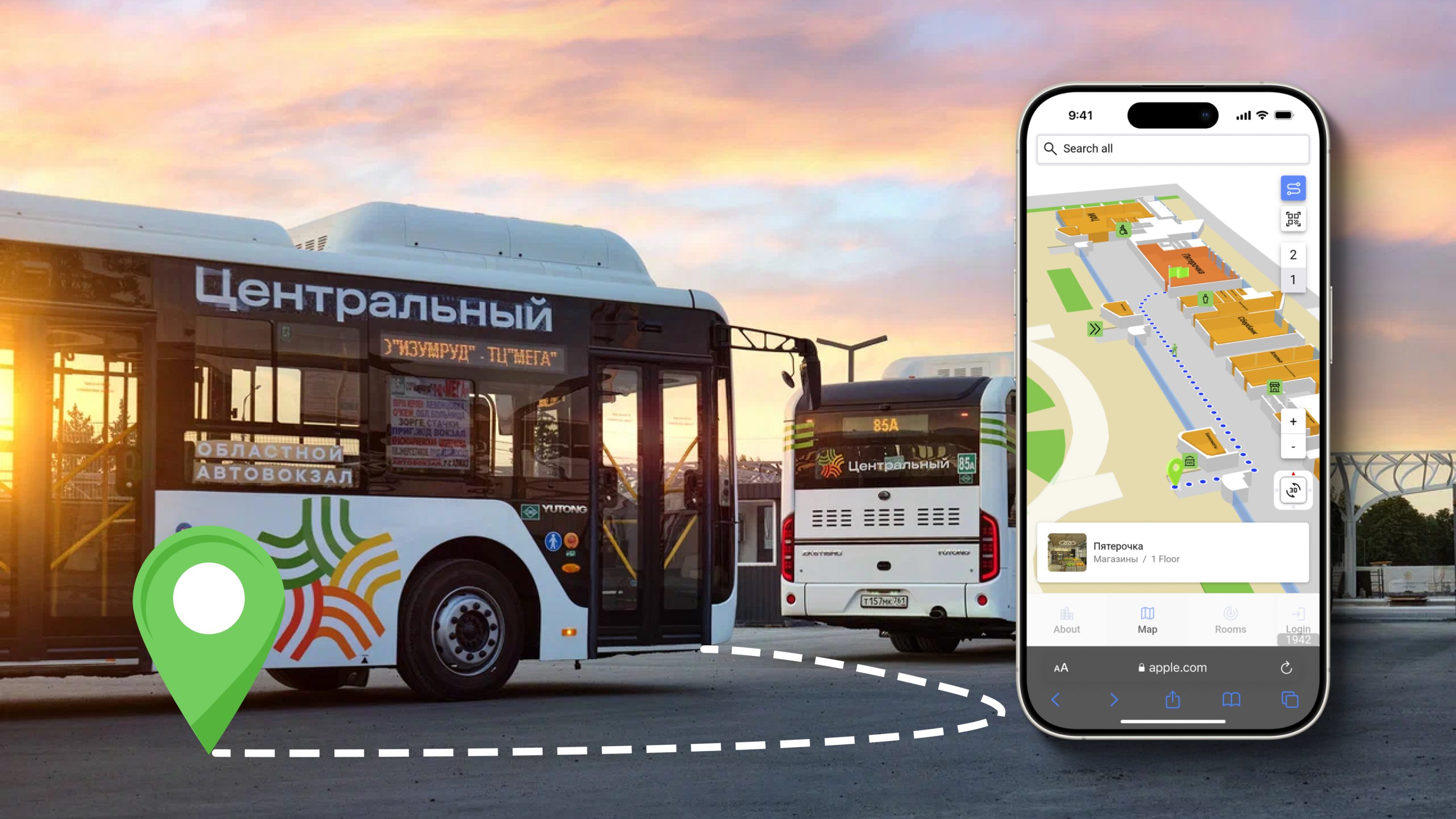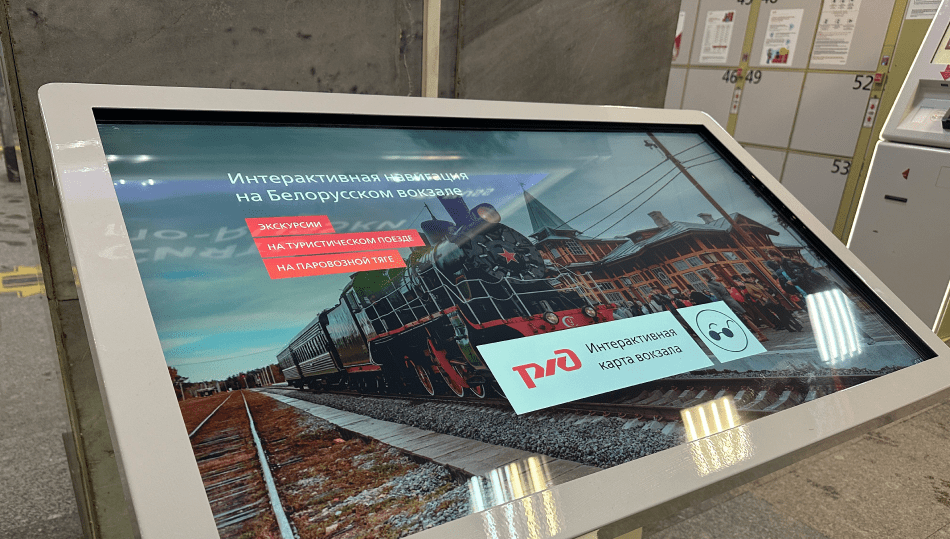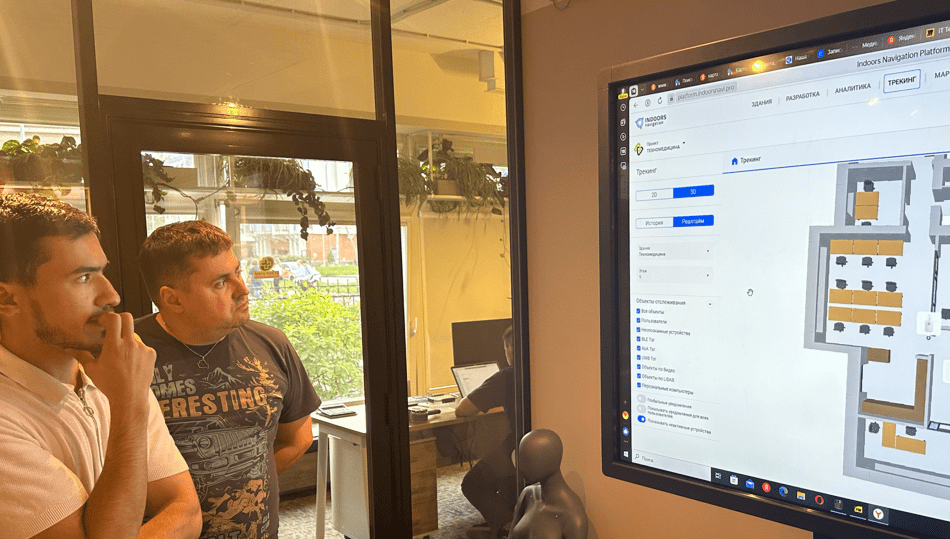2022
Интерактивная карта и музейный гид павильона
«Умный город»
In cooperation with the Moscow Innovation Cluster (MIC) and the Moscow Department of Information Technology (DIT), Indoors Navigation has implemented a project to digitalize the Smart City pavilion at VDNH.
This project aims to improve navigation through the exhibition space and create an interactive museum guide that significantly improves the user experience and access to information.
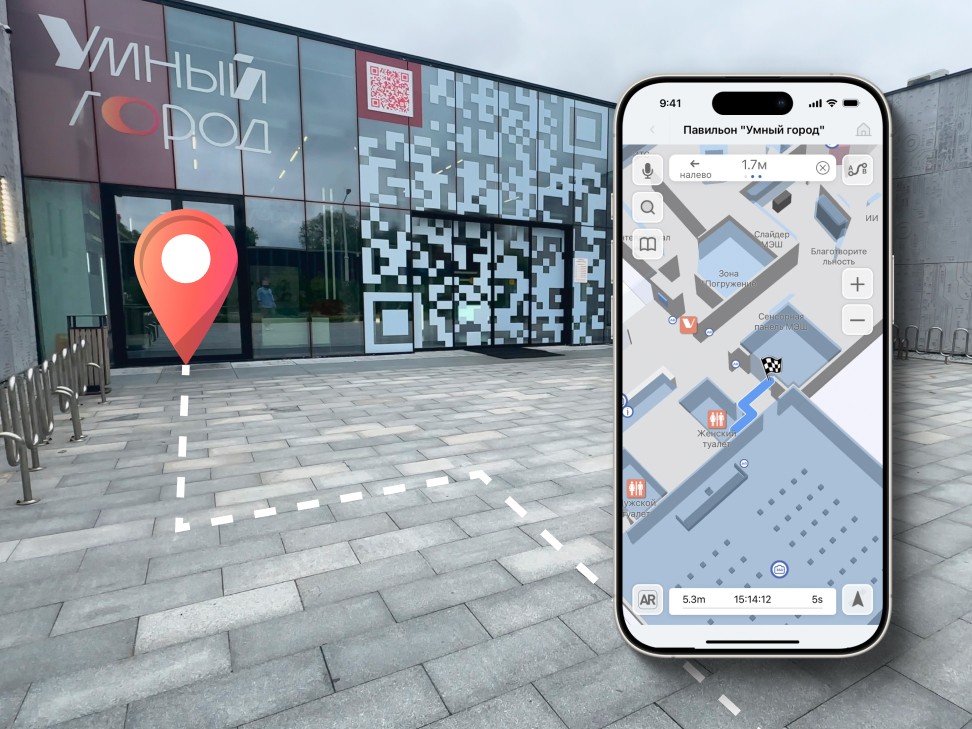
by 20%
Improving customer
satisfaction
by 15%
Increased attendance
by 10%
Management optimization
and security
Description of the solution and implementation
As part of the project, Indoors Navigation has integrated its geographic information system, the Indoors Navigation Platform (INP), which is based on the facility's digital twin technology. This made it possible to create an accurate and up-to-date digital copy of the pavilion, which made navigation through it convenient and intuitive.
The positioning system was implemented on the basis of several technologies:
- Bluetooth (BLE) and Ultra Wideband (UWB) for precise location detection of visitors and staff tracking.
- Video tracking using IP cameras to monitor movements and ensure security.
In addition, a virtual 360 tour integrated with the pavilion map allowed remote users to "walk" around the pavilion, even while in another city, which is especially important when planning events or presentations.

Usage examples
- Mobile App: Visitors could download the app and use it to navigate the pavilion. The app automatically turned on an audio guide when approaching interesting exhibits and provided information about the exhibition areas. Augmented reality (AR) tracking was also implemented, which allowed visitors to follow the route through their smartphone screen.
- QR navigation: For users who did not install the app, it was possible to scan QR codes posted around the pavilion. This made it possible to open the map and see your location in real time, as well as find the right areas and exhibits.
- Touch terminals and infomats: Interactive panels and infomats were installed, which displayed 3D maps of the pavilion indicating the nearest points of interest — toilets, closets, exits, as well as other areas such as a conference hall or demo zones.
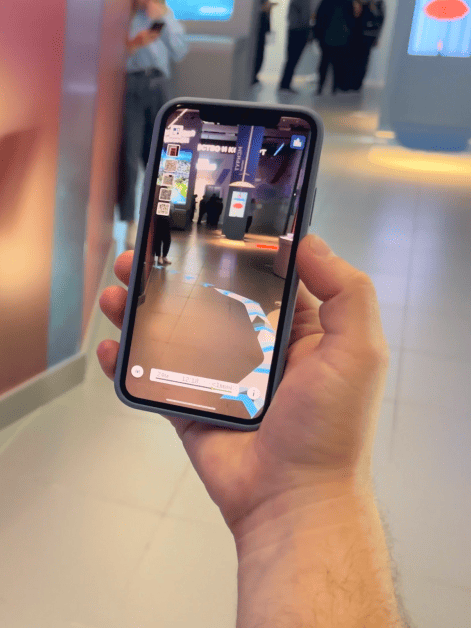
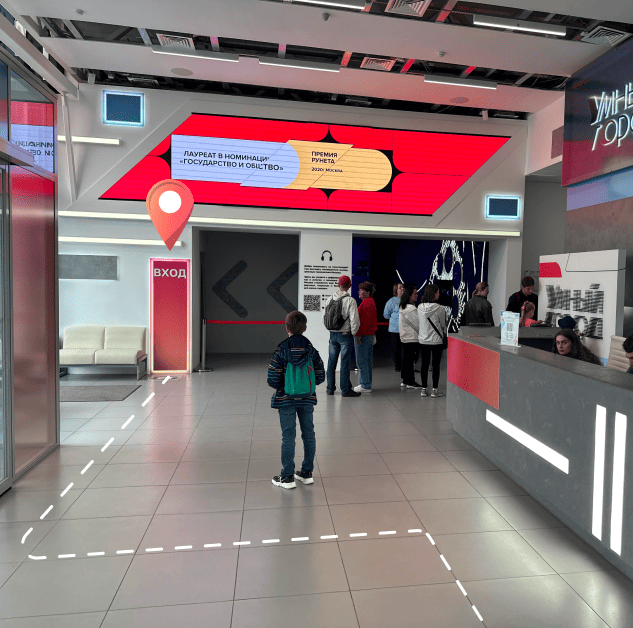
Functionality and analytics
The Indoors Navigation platform has a web-based control panel for the pavilion administration, which made it possible to track the movements of visitors and employees in real time, analyze heat maps of attendance, and receive notifications about access to certain areas. This gave the administration powerful tools to manage the pavilion and improve security, as well as the ability to collect data to improve future exhibitions.


Ivan Sugrobov
Technical Director of Indoors Navigation LLC
With this case, we have demonstrated that the use of indoor navigation in museum and exhibition spaces in modern realities is one of the prerequisites for digitalization. Our company is interested in the development of this area of indoor navigation in conjunction with interactive support of museum visitors and exhibitions on expositions.

Evgeny Novikov
Advisor to the Deputy Head of DIT Moscow
With the advent of the digital map on the website, it became much more comfortable for visitors to navigate the space of the pavilion, where the exposition was updated shortly before the implementation of the project with Indoors Navigation. Separately, I would like to mention the function of the interactive 360 tour, thanks to which anyone can feel themselves inside the pavilion remotely, even while in another city.
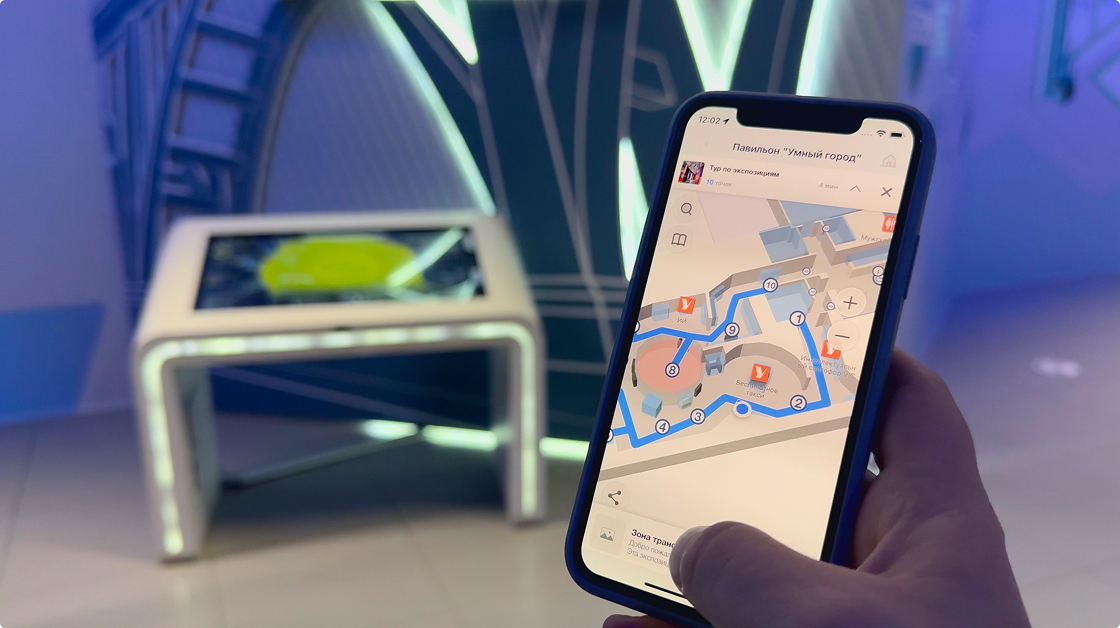
Potential metrics
- Increased visitor satisfaction: The system reduced the time spent searching for objects of interest and improved access to information about exhibitions and exhibits, which increased the total time spent interacting with the exhibition by 20%.
- Increased attendance: Interactive navigation and virtual tours attracted more visitors both offline and online, which increased the overall attendance of the pavilion by 15%.
- Management optimization and security: The pavilion Administration gained access to analytical data on visitor movements, which allowed for better flow management and increased security. As a result, the number of incidents was reduced by 10%.


Implementation results
The project of introducing the Indoors Navigation Platform in the Smart City pavilion has become a successful example of digitalization of museum and exhibition spaces. Visitors received a convenient and intuitive navigation system, which significantly improved their experience of interacting with the exhibition. The system allowed the pavilion administration to improve control and management, as well as use the collected data for subsequent events.
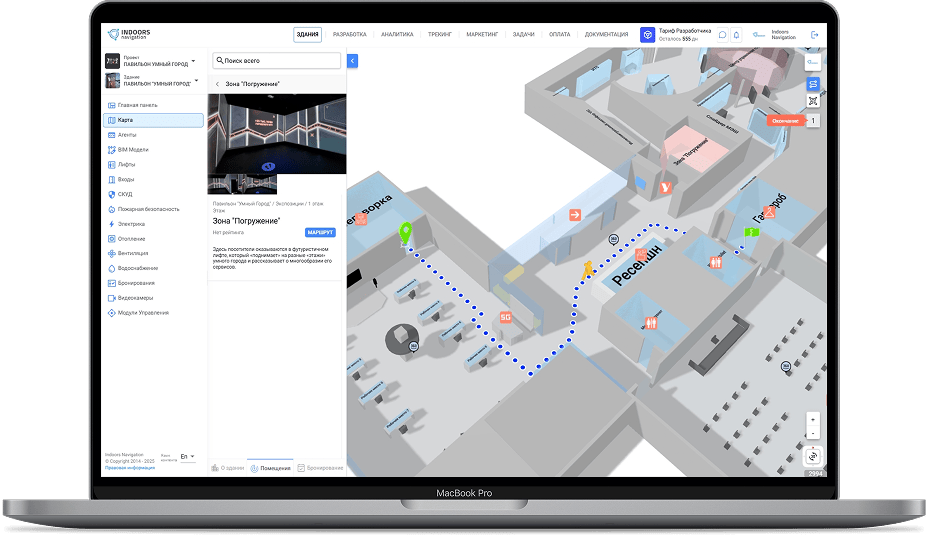
Conclusion
The introduction of INP in the Smart City pavilion at VDNH demonstrated the enormous potential of digital technologies to improve the user experience and manage exhibition spaces.
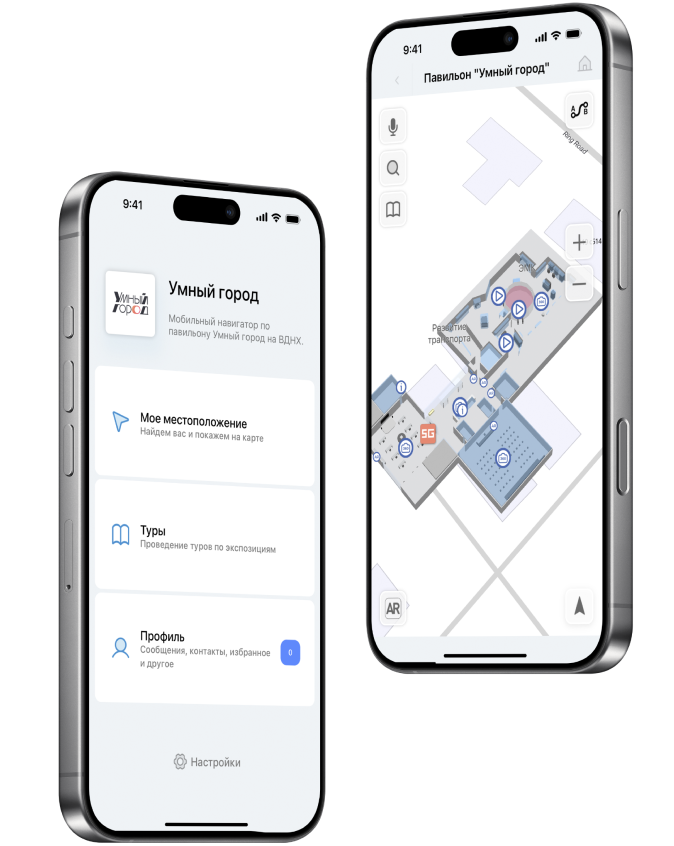
The mobile app
We have created an innovative mobile application for the Smart City pavilion at VDNH, which turns visiting the exhibition into an exciting digital journey. The application combines intelligent navigation with a multimedia guide to the exhibitions.
The special feature of the solution is integration with a positioning system based on Bluetooth and UWB technologies, providing accuracy up to 30 cm.
The app demonstrates how digital technologies can make museum spaces more interactive and user-friendly. It's not just a navigator — it's the digital guide of the future!
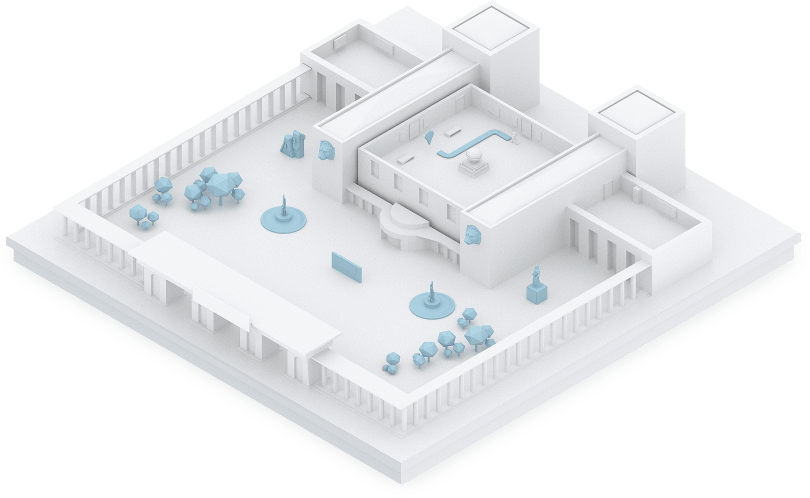
Navigation in the museum
Museums and expocentres using modern geolocation technologies manage to make visits more exciting and interesting for the viewer, and the operation of the building more convenient and visual for the administration.
Thematic publications on our blog
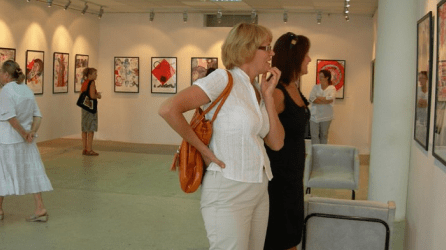
Museums and exhibitions
10 examples where the developments and implementation of iBeacon technology could be useful: Museums and exhibitions. There are also zoos, water parks, art galleries and other facilities where you need to walk from place to place and read the captions to what you are looking at. The navigation service is able to turn this process into a pleasure, which means…
